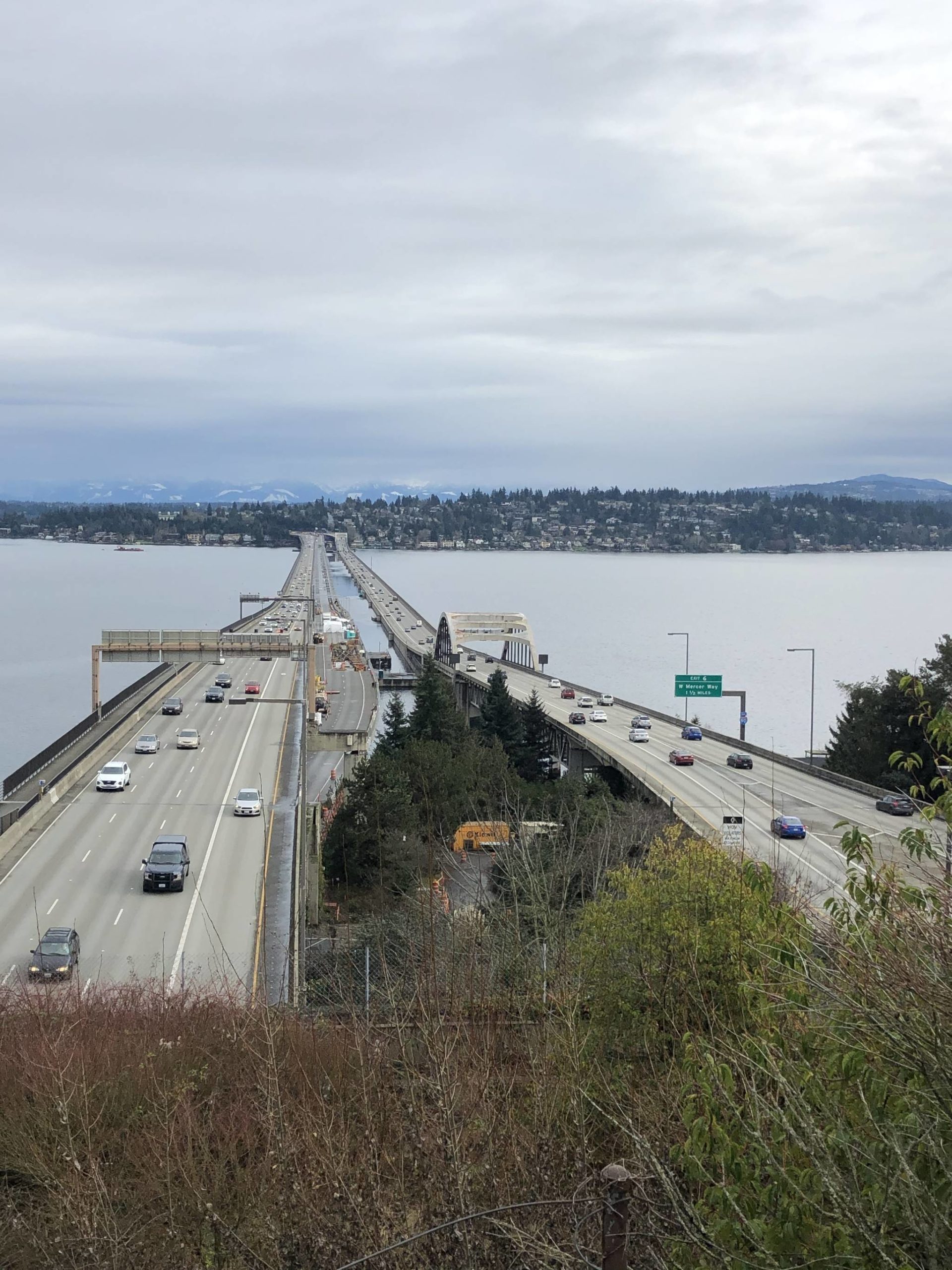Once a long upon ago in a place not so very far away, a foot-shaped island floated in the middle of Lake Washington. Like a severed appendage, it was disconnected from Seattle, Bellevue and Renton. Accessibility was limited. For the longest time, the only way the people of Mercer Island could connect with family and friends who lived on the mainland was by boat.
In November 1923, a drawbridge was constructed linking the Eastside with the pristine forested island named for a Seattle pioneer. Seventeen years later the foot-shaped community took a major step forward. A two mile stretch of floating concrete pontoons resulted in the first and longest floating bridge of its kind anywhere. Commerce kicked in at an impressive new level. Residential housing grew by leaps and bounds.
Lacey V. Murrow, the 36-year-old head of our state’s highway department, was the main motivation behind the Mercer Island bridge (later named in his honor). Murrow, the older brother of broadcaster Edward R. Murrow, was also the impetus behind the Tacoma Narrows Bridge.
While the younger Murrow was in London to cover the Battle of Britain, Lacey was making news of his own. Amazingly, both the Narrows Bridge and the Mercer Island Bridge were dedicated the first week of July 1940. Younger brother Ed sent a telegram conveying his congratulations. Against the backdrop of war across the pond, impressive bridges were spanning Washington waters.
Because this week marks the 80th anniversary of a bridge that connects the community where I live and work to downtown Seattle, I’ve been contemplating the difference such a connection has made and continues to make. That engineering wonder does more than keep a floating highway afloat on which tens of thousands drive on each day. It also floats dreams and transactions that impact millions. Not to have access to the Mercer Island floating bridge would be a nightmare. When bridges fail, those who depend on them suffer greatly.
Ironically, four months after the Tacoma Narrows Bridge was dedicated on July 1, 1940, “Galloping Gertie” collapsed. But she was not alone. Fifty years after the ribbon was cut on July 2, 1940, opening the Mercer Island Floating Bridge, it, too, sank. Perhaps you remember the storm that took it down during the Thanksgiving holiday of 1990. In both instances, people were inconvenienced and alienated. The importance of connectivity was underscored.
But, broken bridges aren’t the only things that leave us stranded. The current coronavirus pandemic also has me thinking about other connections we take for granted until they are denied us. COVID-19, without notice, undermined the reliability of the “bridges” on which we depend on a daily basis. Contact with family and loved ones was suddenly disabled. Personal communication with clients and vendors were cut-off without notice.
As the chaplain at Covenant Living at the Shores, I’ve observed the impact “sheltering in place” has on seniors when they are denied visits from children and grandchildren. The emotional toll on persons separated from their spouses quarantined in memory care is immense. Those who have not been able to hug their mate for twelve weeks struggle big time. Losing access to the “bridge of touch” is debilitating.
Now that our communities are beginning to re-open, we are realizing how important contact with others really is. Cabin fever was not one of the COVID-19 symptoms. But it certainly is one of the outcomes. As social beings, we were created for community. When we are isolated, we atrophy. We fail to thrive. Our hospitality muscles lose body mass.
A bridge failure, much like a “sheltering in place” order, can catch us unaware. But now that we have been through it, we can better prepare for next time. Knowing how vital connections with family and friends are, isn’t this a good time to discover new ways to improve how we connect with each other? Isn’t it time to fix “bridges” that have fallen into disrepair and access relationships while we can?
Greg Asimakoupoulos is Chaplain at Covenant Living at the Shores in Mercer Island.



